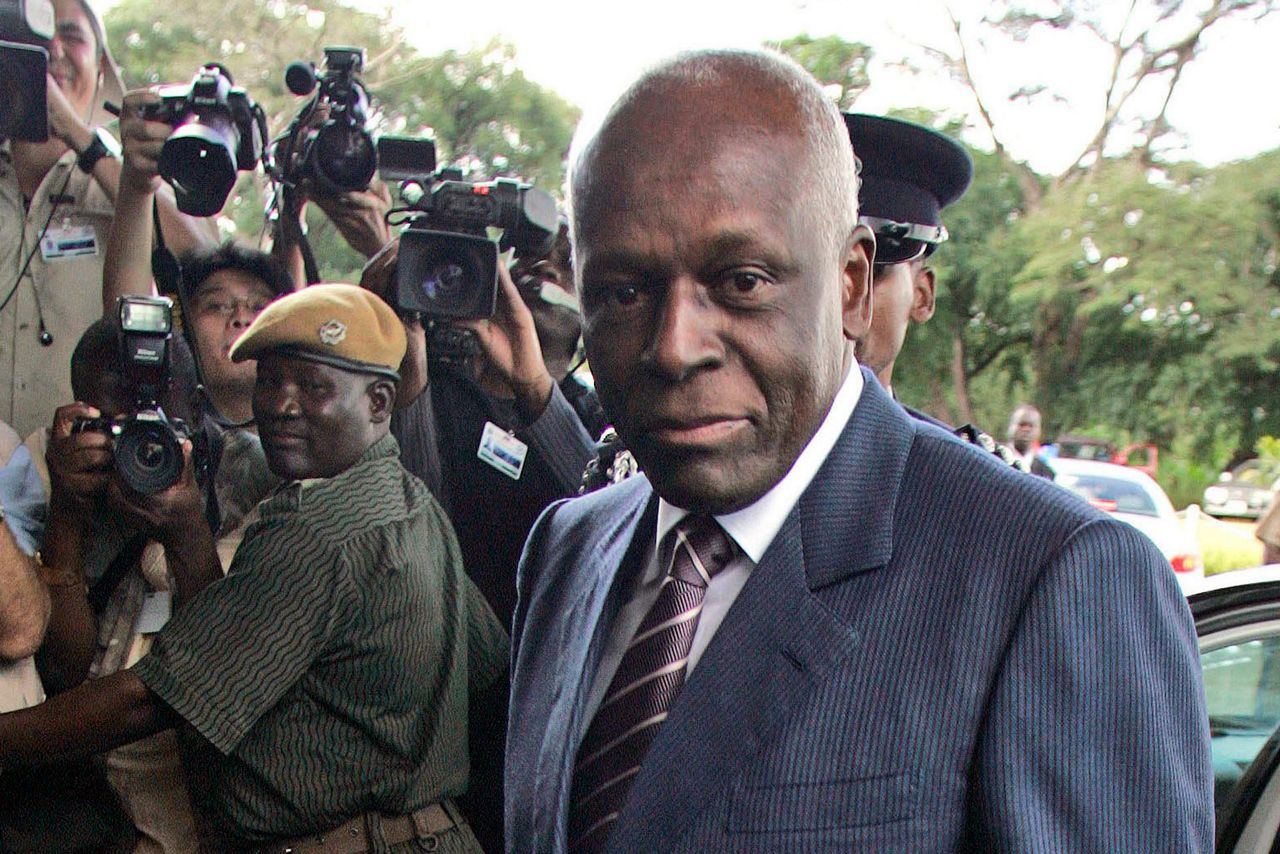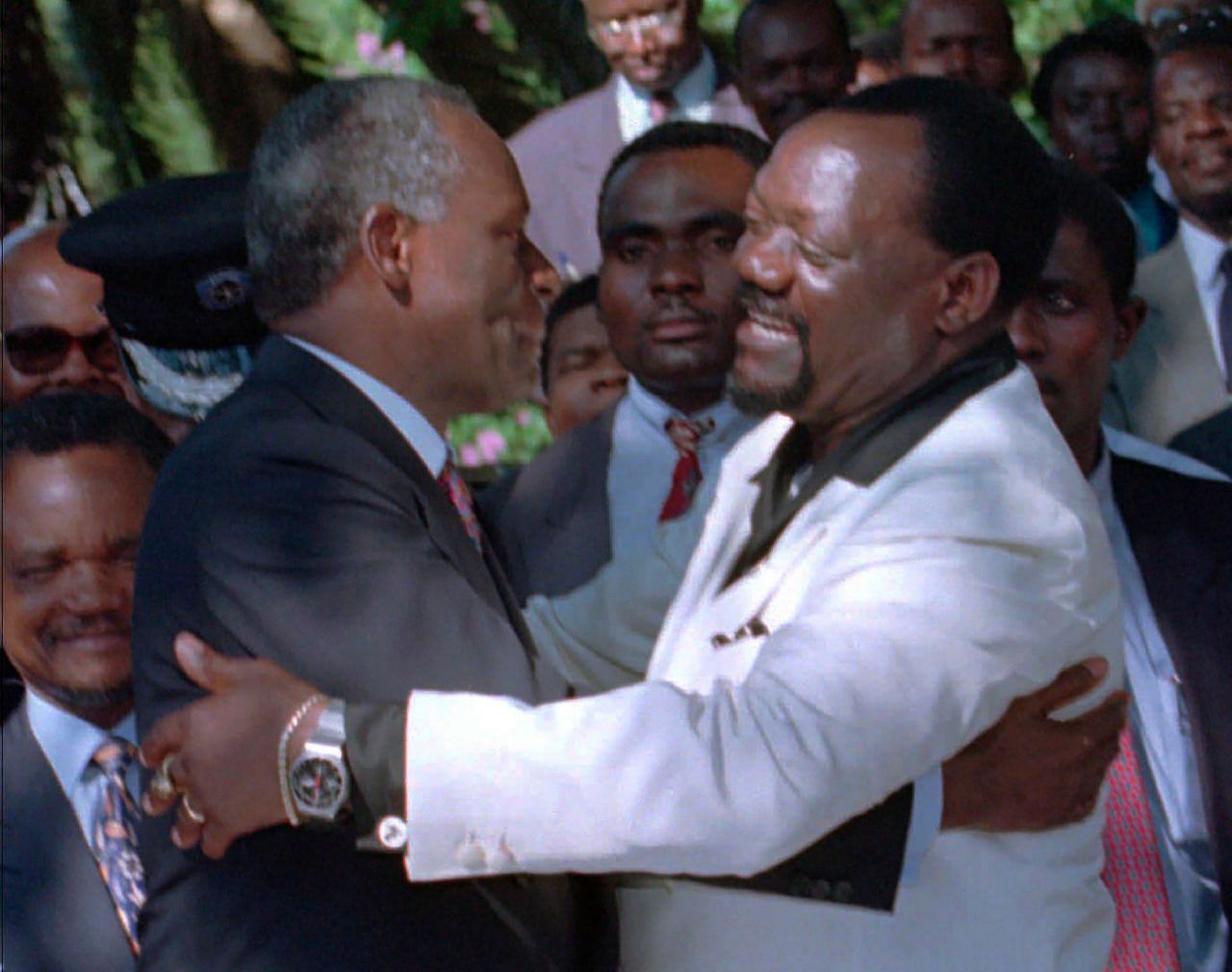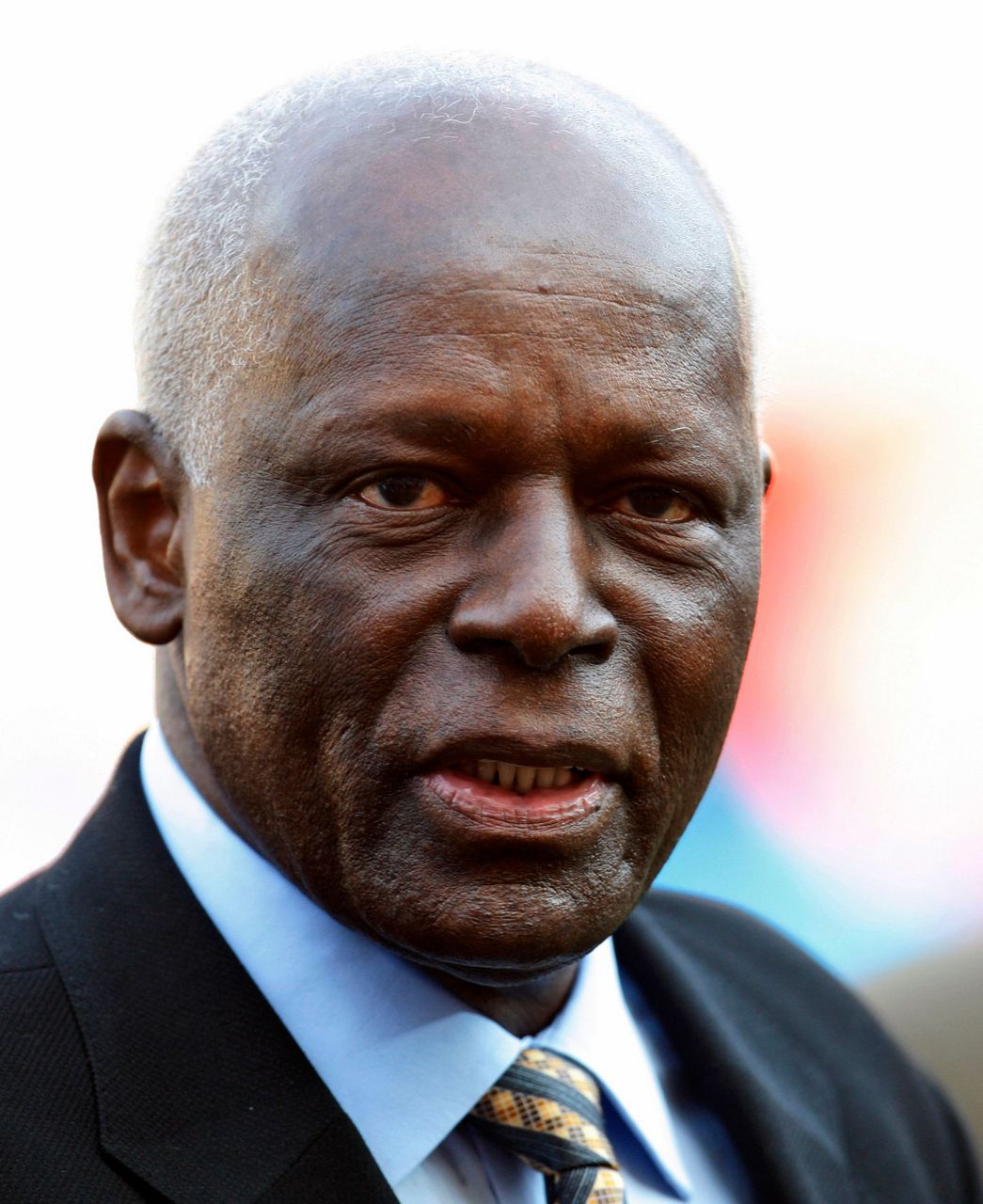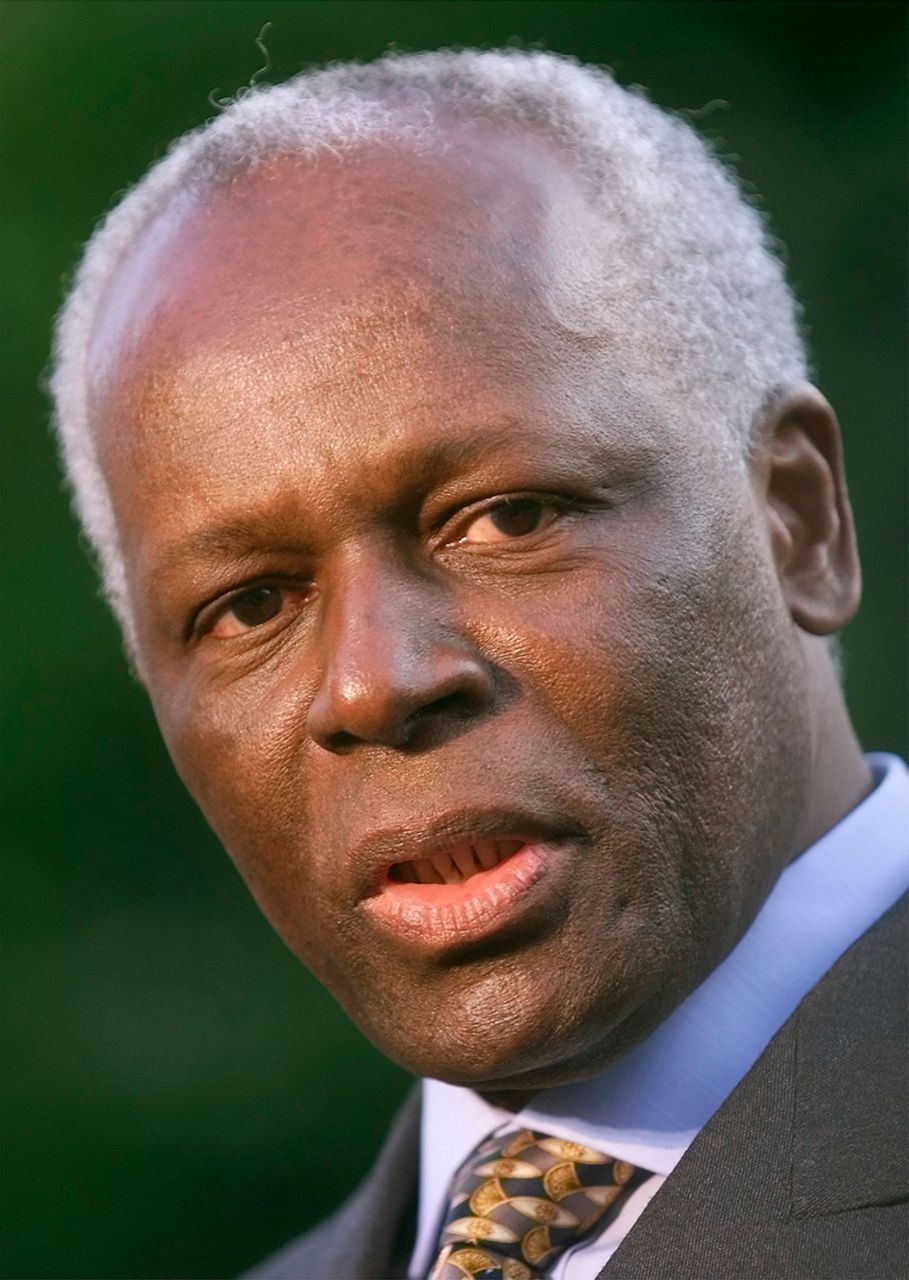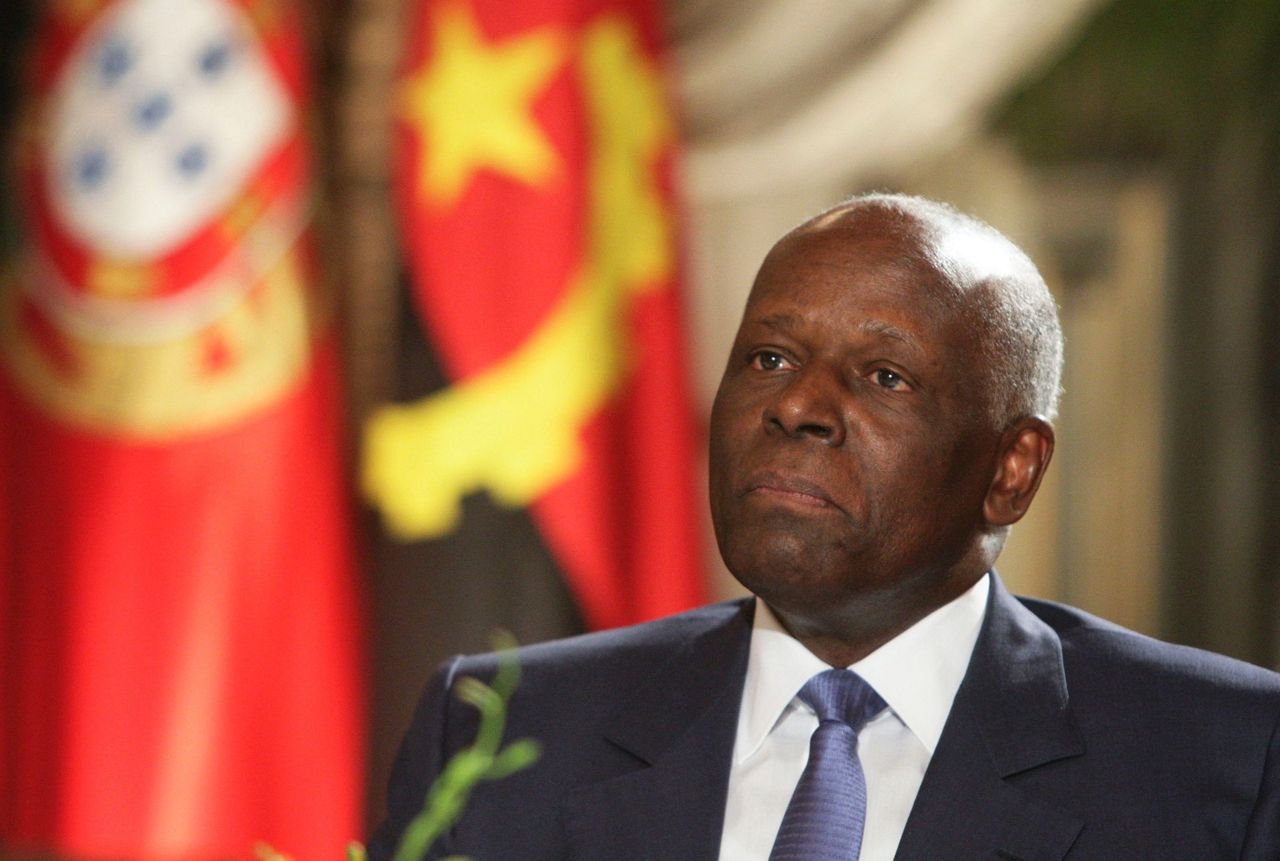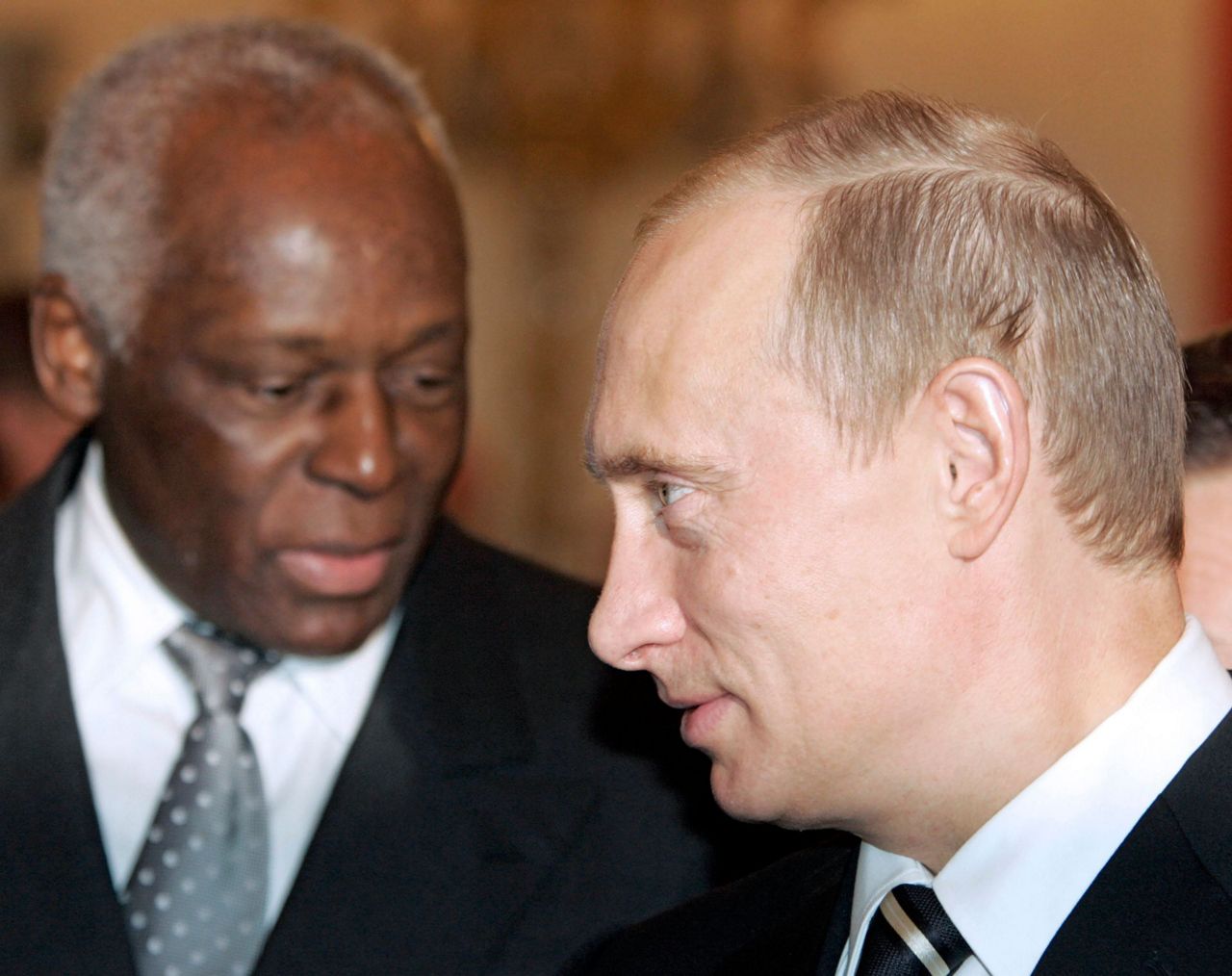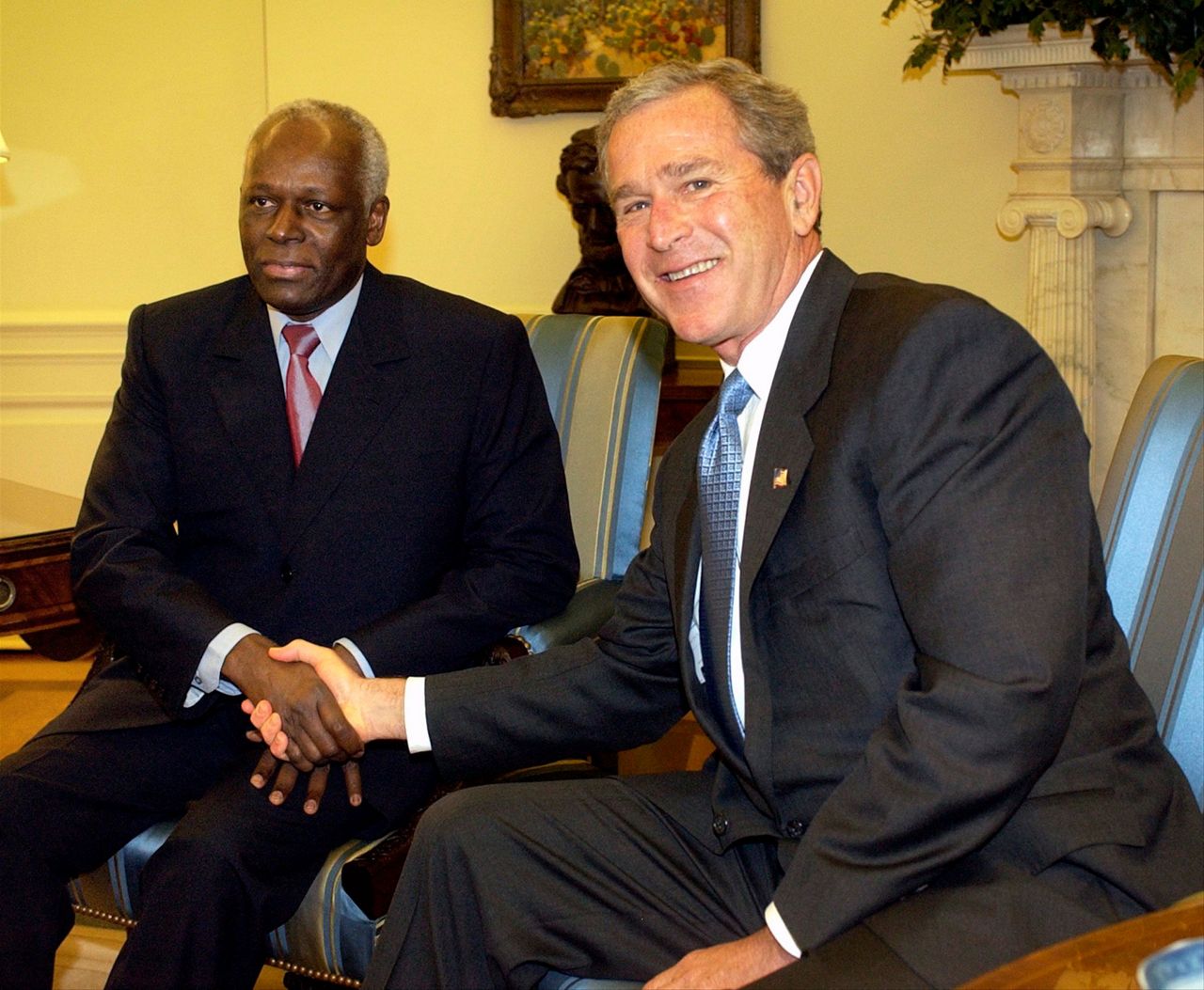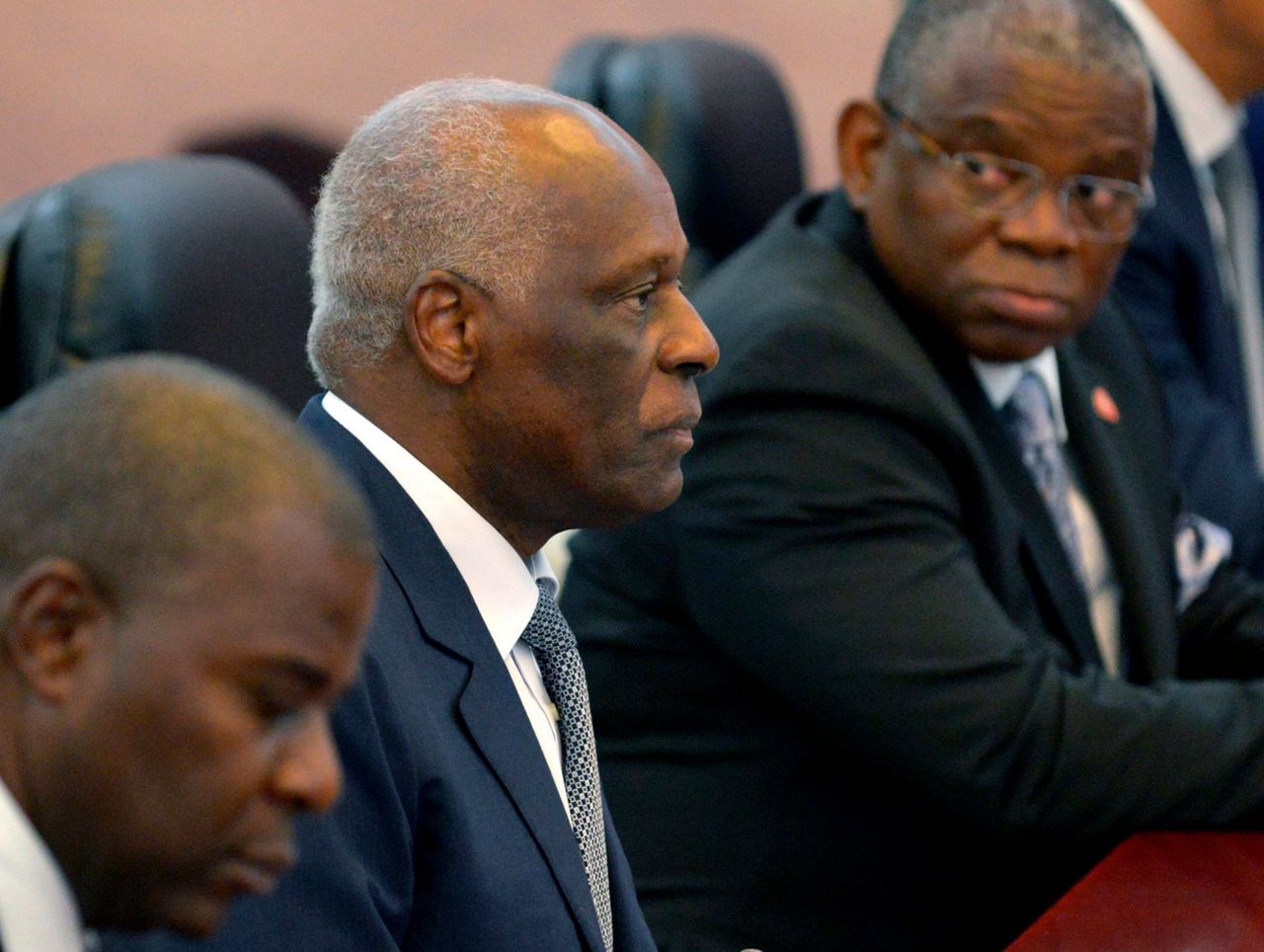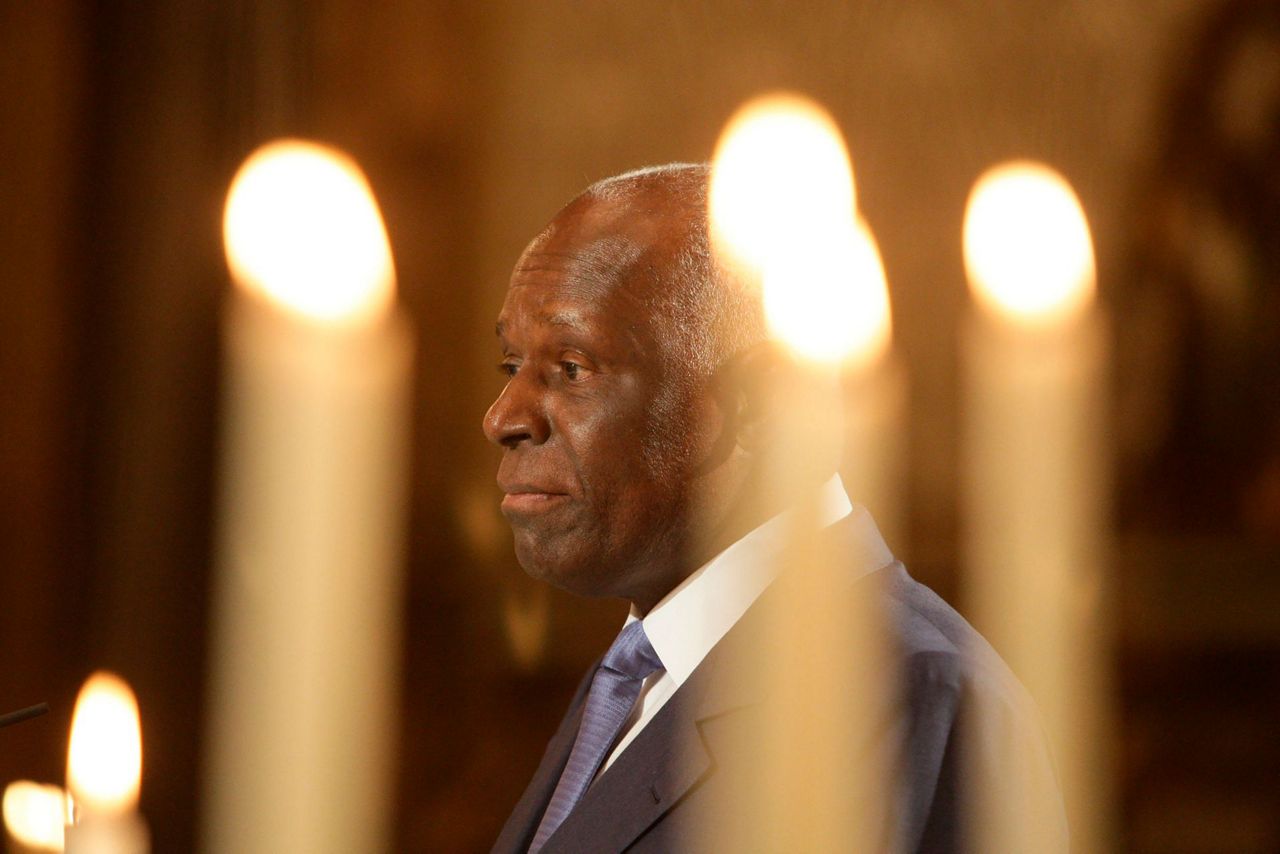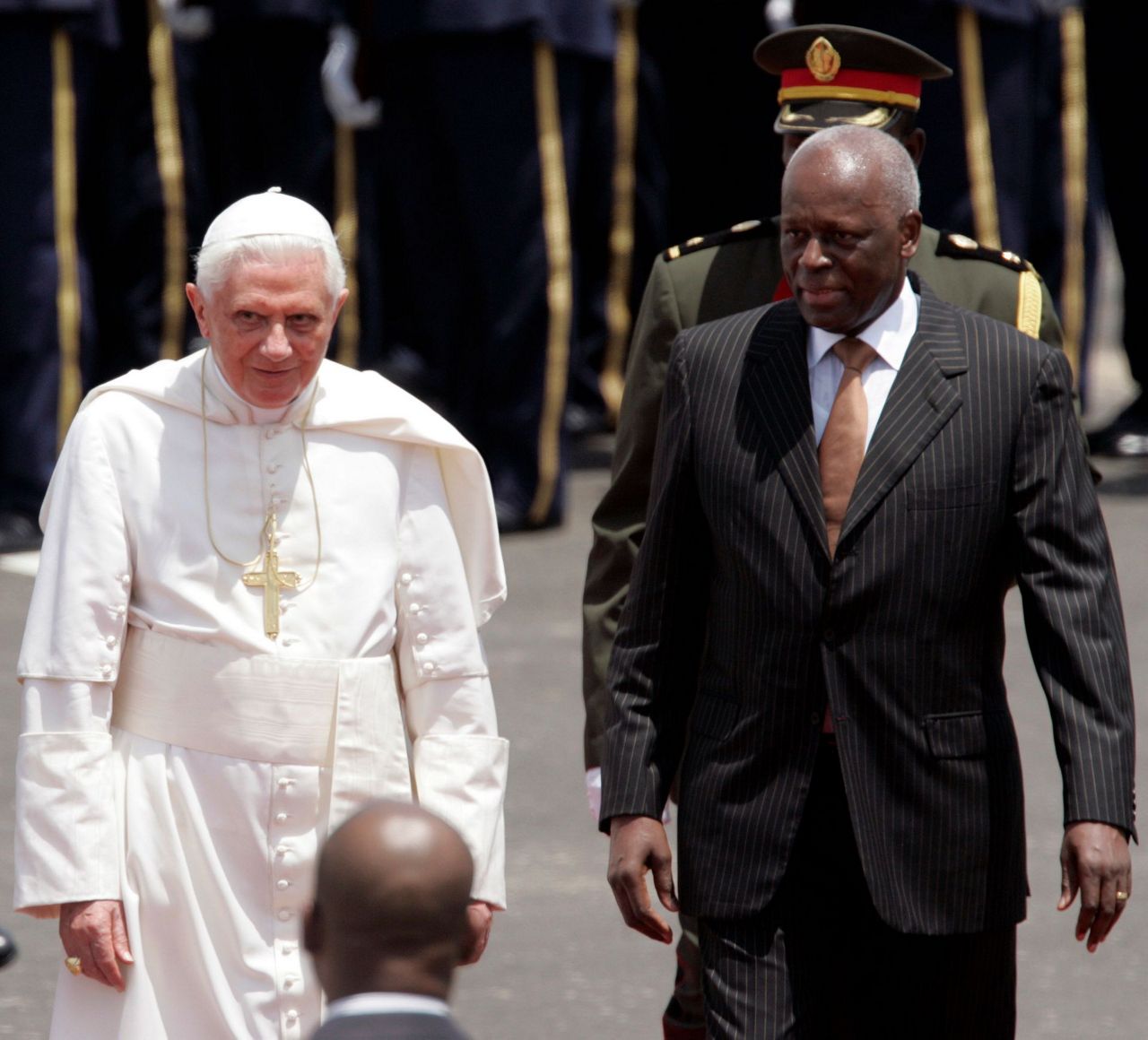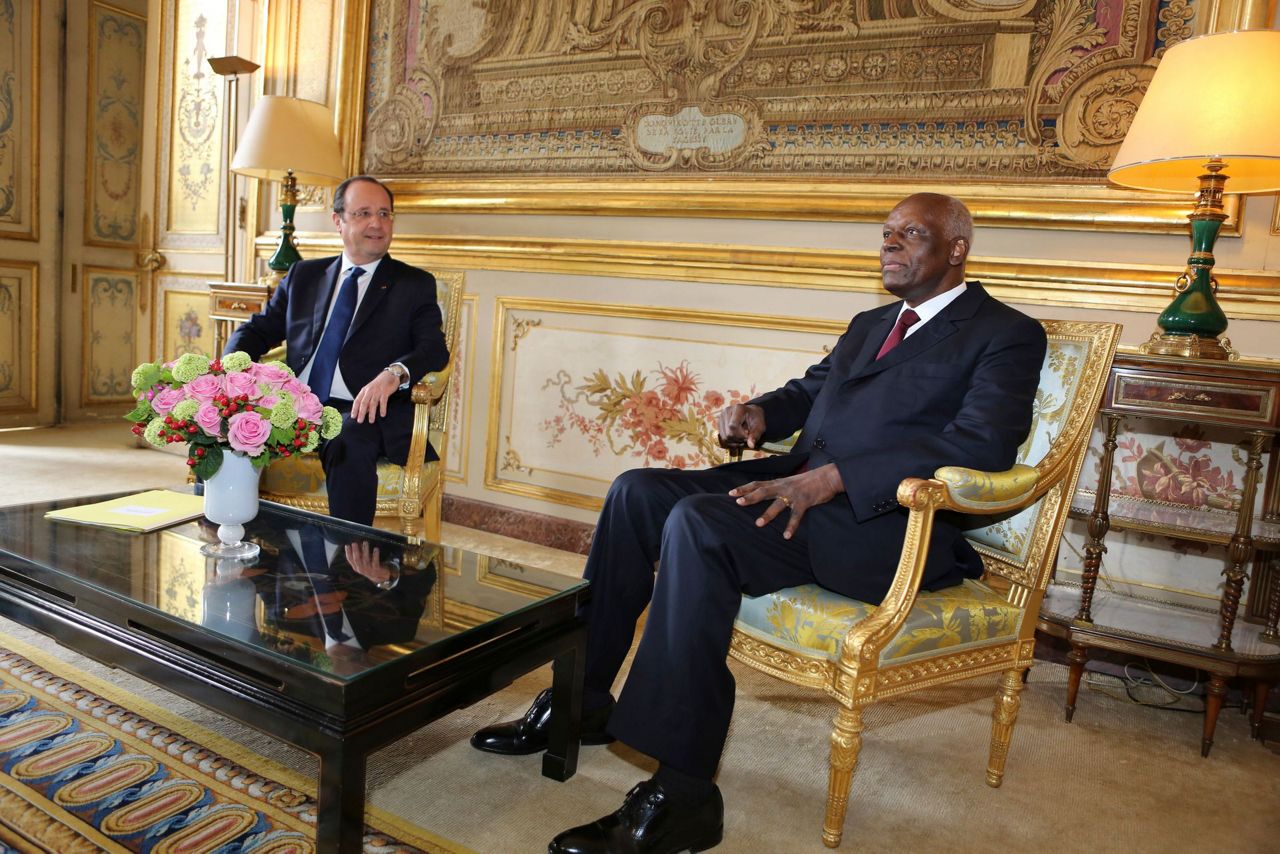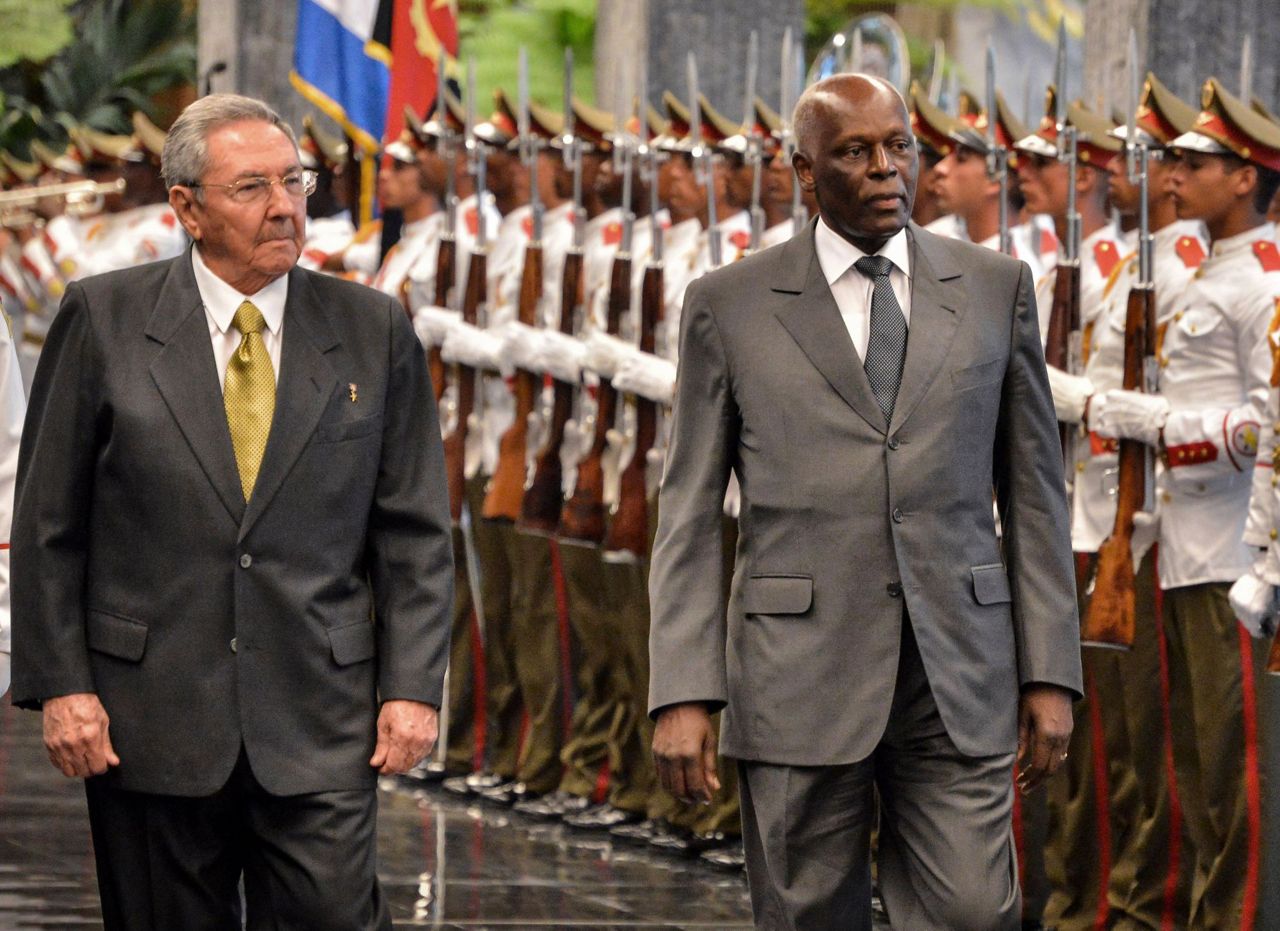LISBON, Portugal (AP) — Former Angolan President José Eduardo dos Santos died Friday in a clinic in Barcelona, Spain, the Angolan government said.
He was 79 years old and died following a long illness, the government said in an announcement on its Facebook page.
The announcement said dos Santos, who ruled Angola for almost 40 years from 1979, was “a statesman of great historical scale who governed ... the Angolan nation through very difficult times.”
Dos Santos had mostly lived in Barcelona since stepping down in 2017 and he reportedly had been undergoing treatment there for health problems.
Angola’s current head of state, Joao Lourenco, announced five days of national mourning starting Friday, when the country’s flag will fly at half-staff and public events are canceled.
Dos Santos came to power four years after Angola gained independence from Portugal and became enmeshed in the Cold War as a proxy battlefield.
His political journey spanned single-party Marxist rule in post-colonial years and a democratic system of government adopted in 2008. He voluntarily stepped down when his health began failing.
In public, dos Santos was unassuming and even appeared shy at times. But he was a shrewd operator behind the scenes.
He kept a tight grip on the 17th-century presidential palace in Luanda, the southern African country’s Atlantic capital, by distributing Angola’s wealth between his army generals and political rivals to ensure their loyalty. He demoted anyone he perceived to be gaining a level of popularity that could threaten his command.
Dos Santos’ greatest foe for more than two decades was Jonas Savimbi, leader of the UNITA rebels whose post-independence guerrilla insurgency fought in the bush aimed to oust dos Santos’ Popular Movement for the Liberation of Angola, or MPLA.
The MPLA had financial support from the Soviet Union and military support from Cuba in its war against UNITA. Savimbi was backed by the United States and South Africa.
The war would last, with brief periods of U.N.-brokered peace, until 2002 when the army finally tracked down Savimbi in eastern Angola and killed him.
Dos Santos abruptly shed his Marxist policies after the collapse of the Soviet Union in the early 1990s. He moved closer to Western countries, whose oil companies invested billions of dollars in mostly offshore exploration.
His supporters praised his ability to adapt to changing circumstances. His critics called him unscrupulous.
Dos Santos was invited to the White House in 2004 by then-president George W. Bush as the United States has looked to reduce its dependence on oil from the Middle East.
Angola became sub-Saharan Africa’s second-largest oil producer after Nigeria, producing close to 2 million barrels per day. It also unearthed more than $1 billion worth of diamonds each year.
However, the wealth never reached the Angolan people, who during and after the civil war were at risk from large areas of unmapped minefields and had little access basic amenities, such as running water or roads. Education and health care were -- and remain -- sparse.
More than $4 billion in oil revenue vanished from Angolan state coffers between 1997 and 2002, New York-based Human Rights Watch said in a 2004 report, based on an analysis of figures from the International Monetary Fund.
The U.S. State Department said that wealth in Angola is “concentrated in the hands of a small elite, who often used government positions for massive personal enrichment.”
Dos Santos was believed to own valuable real estate in Brazil, France and Portugal, as well as foreign bank accounts.
Under his rule, and despite the general poverty, street protests were rare and quickly broken up by the heavily armed riot police known popularly as “Ninjas.” A well-paid and well-equipped presidential guard was garrisoned inside dos Santos’s palace and lined the city’s grimy, potholed streets whenever he emerged.
A bricklayer’s son from Luanda, Angola’s coastal capital, dos Santos began his political life with boots and a rifle in 1961 as an 18-year-old guerrilla for the MLPA in the fight for independence from Portugal.
MPLA bosses pulled him from combat in 1963 and sent him to the Soviet Union for training as a petroleum engineer and military communications specialist.
When he returned to Angola in 1970, he skillfully negotiated compromises to keep the MPLA from breaking up into splinter groups and as a reward was appointed to the party’s central committee.
When independence arrived in 1975, dos Santos became foreign minister and later planning minister and deputy prime minister in the single-party Marxist state.
In a surprise choice, the MPLA elected dos Santos as 37-year-old president upon the death of Agostinho Neto, Angola’s first president, in 1979. Dos Santos was seen as a consensus figure between squabbling party veterans, but few anticipated his political longevity.
Dos Santos never sought to establish a personality cult and remained a mysterious figure. He reportedly once said in private he felt his true vocation was that of a monk.
Nor was he known for political sensitivity: He built a multimillion-dollar mansion on the fringe of a Luanda shantytown while millions of Angolans were fighting starvation during the civil war.
He was considered a sure loser against Savimbi in the country’s first democratic elections in 1992, following a peace treaty signed the previous year.
Margaret Anstee, a former U.N. special representative to Angola, described dos Santos as being almost the opposite of Savimbi.
“His demeanor was grave and reserved, to the point that I traced a sense of shyness or timidity, absurd as this seemed. The contrast with Dr. Savimbi’s flamboyant personality could not have been more vivid,” she wrote in her 1996 book on Angola entitled “Orphan of the Cold War.”
But in further evidence of his staying power dos Santos held on again, narrowly outpolling Savimbi for president while leading the MPLA to a parliamentary majority in the simultaneous legislative election.
When Savimbi rejected his defeat at the ballot box and returned to his armed struggle, Western support gradually swung behind dos Santos.
The foes signed another peace deal, brokered by the United Nations, in 1994, but that also unraveled four years later.
Meanwhile, dos Santos — with an army of around 100,000 troops, many with years of jungle combat experience — essayed a role as a regional power broker, starting with neighboring countries.
He sent 2,500 troops to Republic of Congo in 1997 to help President Denis Sassou-Nguesso seize power and the following year sent a contingent to Congo to help President Joseph Kabila’s government fight rebels backed by Rwanda and Uganda.
The end of Angola’s civil war in 2002 brought an opportunity for broader economic development in the southern African country, which is more than three times the size of California.
But public infrastructure was devastated; 4 million people — about one-third of the population at the time — had fled their homes because of the fighting; and oil and diamond wealth continued in the hands of the political and military elite.
Berlin-based Transparency International’s Corruption Perceptions Index 2005 named Angola as one of the world’s 10 most corrupt countries.
“As land mine-maimed children begged in the streets, politicians’ wives flew to New York on the government health budget for nip-and-tuck cosmetic surgery,” wrote John McMillan, a Stanford University economics professor, in a 2005 study on Angolan corruption.
Under pressure to finally hold a ballot, dos Santos announced legislative elections in 2008 and a presidential election the following year.
Dos Santos’s MPLA won the most votes for parliamentary seats. But then the head of state changed tack, first postponing the presidential ballot and then scrapping it.
He altered the constitution so that the president is chosen by the party which wins the parliamentary elections. That kept him in power for another eight years.
However, with his health reportedly worsening, Dos Santos announced in 2016 he would retire.
He was replaced by an MPLA stalwart, João Lourenço, the current president, who has made an anti-corruption drive his flagship policy. He has targeted dos Santos’ grown children, who possess fabulous personal wealth, but not his predecessor.
Dos Santos, who was married four times, was survived by his current wife, Ana Paula, by whom he had three children. He is known to have at least three other children and various grandchildren.
Copyright 2022 The Associated Press. All rights reserved. This material may not be published, broadcast, rewritten or redistributed without permission.



